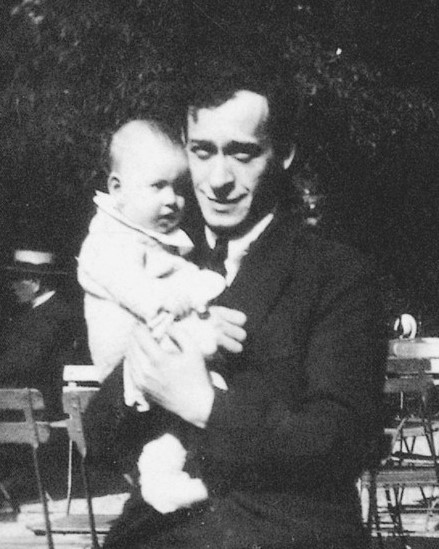Ossip ZADKINE
January 5, 2019Abraham MINTCHINE
KIEV (UKRAINE) 1898 – TOULON (FRANCE) 1931
At the age of thirteen, Abraham Mintchine worked as an apprentice goldsmith in Kiev. He started to paint when he was sixteen years old. In 1923, he left Russia for Berlin, where he dealt with scenography and designed costumes for the Jewish theater. According to art critics, the works that he presented at his first exhibition in Berlin were reminiscent of the Cubist style. Unfortunately, no paintings of that time have survived. Mintchine arrived in Paris in 1926 with his wife Sonia, who was an opera singer. He adopted an expressionist technique. Their daughter Irene was born two years later. Mintchine settled at 89 rue de la Glaciere and immediately became friends with the group of Russian artists living in Montparnasse, who he had already met in Berlin: Mikhail Larionov, Nathalie Gontcharova, and Maurice Blond. His first exhibitions took place at the Alice Manteau gallery in 1928 and at Zborovski’s in 1929. He was a friend of painter Othon Friesz. He stayed in the south of France, in La Garde, near Toulon, where he died suddenly of a heart attack on 1931.
Stories of Jewish Artists of the School of Paris 1905-1939
FRENCH-ENGLISH
Capitale des arts, le Paris des années 1905-1939 attire les artistes du monde entier. De cette période de foisonnement, un terme est resté, celui d'Ecole de Paris, qui recouvre une grande diversité d'expression artistique. Dans ce brassage dont Montparnasse est le creuset, un groupe se distingue : celui des artistes juifs venus de Russie, de Pologne et d'Europe centrale. Si leurs styles sont variés, un destin commun les rassemble : ils fuient l'antisémitisme de leur pays d'origine. Certains ont connu la célébrité dès les années 1920, tels Soutine, Lipchitz ou Chagall. D'autres n'ont pas eu le temps ou la chance d'y accéder. Près de la moitié a péri dans les camps de concentration nazis.
From 1905 to 1939, Paris attracted artists from all over the globe as the capital of the art world. This period of artistic proliferation became known as the School of Paris, and includes a great diversity of artistic expression. Within the teeming art world centred on Montparnasse, one group set itself apart: Jewish artists from Russia, Poland, and Central Europe. Although their styles were diverse, they shared the common fate of fleeing anti-Semitic persecutions in their home countries. Some became famous in the 1920s, such as Soutine, Lipchitz, and Chagall, while others did not have the time or the luck to gain renown. Nearly half of these artists died in Nazi concentration camps.





